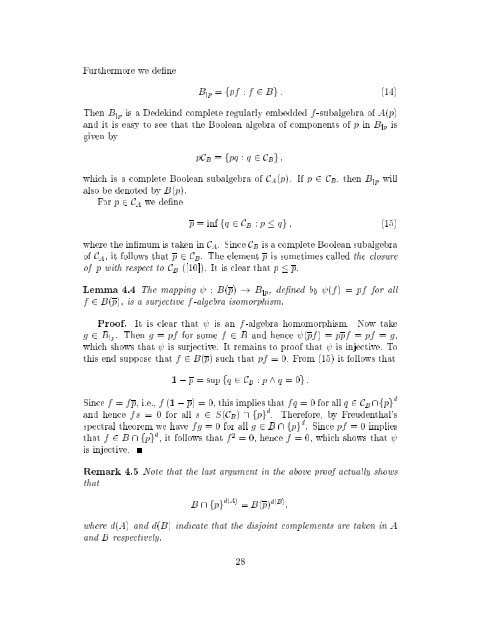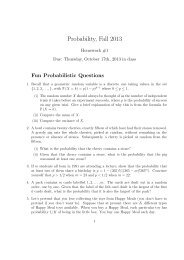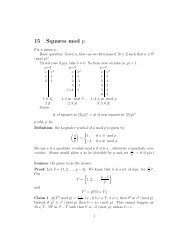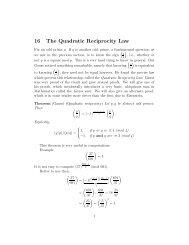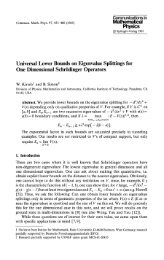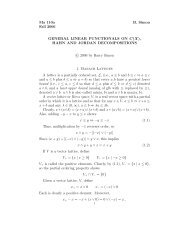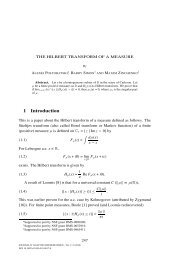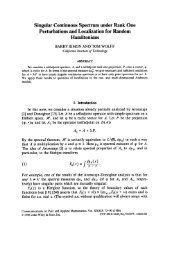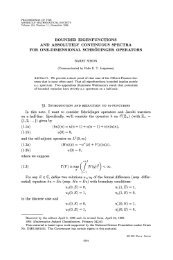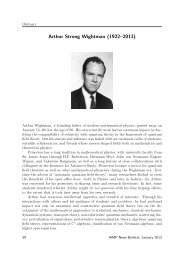Representations of positive projections 1 Introduction - Mathematics ...
Representations of positive projections 1 Introduction - Mathematics ...
Representations of positive projections 1 Introduction - Mathematics ...
Create successful ePaper yourself
Turn your PDF publications into a flip-book with our unique Google optimized e-Paper software.
Furthermore we de ne<br />
B p = fpf : f 2 Bg : (14)<br />
Then B p is a Dedekind complete regularly embedded f-subalgebra <strong>of</strong> A(p)<br />
and it is easy to see that the Boolean algebra <strong>of</strong> components <strong>of</strong> p in B p is<br />
given by<br />
pCB = fpq : q 2CBg <br />
which is a complete Boolean subalgebra <strong>of</strong> CA(p). If p 2 CB, then B p will<br />
also be denoted by B(p).<br />
For p 2CA we de ne<br />
p =inffq 2CB : p qg , (15)<br />
where the in mum is taken in CA. Since CB is a complete Boolean subalgebra<br />
<strong>of</strong> CA, it follows that p 2CB. The element p is sometimes called the closure<br />
<strong>of</strong> p with respect to CB ([10]). It is clear that p p.<br />
Lemma 4.4 The mapping : B(p) ! B p, de ned by (f) = pf for all<br />
f 2 B(p), is a surjective f-algebra isomorphism.<br />
Pro<strong>of</strong>. It is clear that is an f-algebra homomorphism. Now take<br />
g 2 B p. Then g = pf for some f 2 B and hence (pf) = ppf = pf = g,<br />
which shows that is surjective. It remains to pro<strong>of</strong> that is injective. To<br />
this end suppose that f 2 B(p) such that pf =0. From (15) it follows that<br />
1 ; p =supfq 2CB : p ^ q =0g :<br />
Since f = fp, i.e.,f (1 ; p) = 0, this implies that fq = 0 for all q 2CB \fpg d<br />
and hence fs = 0 for all s 2 S(CB) \fpg d . Therefore, by Freudenthal's<br />
spectral theorem we have fg =0for all g 2 B \fpg d . Since pf =0implies<br />
that f 2 B \fpg d , it follows that f 2 =0,hence f =0,which shows that<br />
is injective.<br />
Remark 4.5 Note that the last argument in the above pro<strong>of</strong> actually shows<br />
that<br />
B \fpg d(A) = B(p) d(B) <br />
where d(A) and d(B) indicate that the disjoint complements are taken in A<br />
and B respectively.<br />
28


